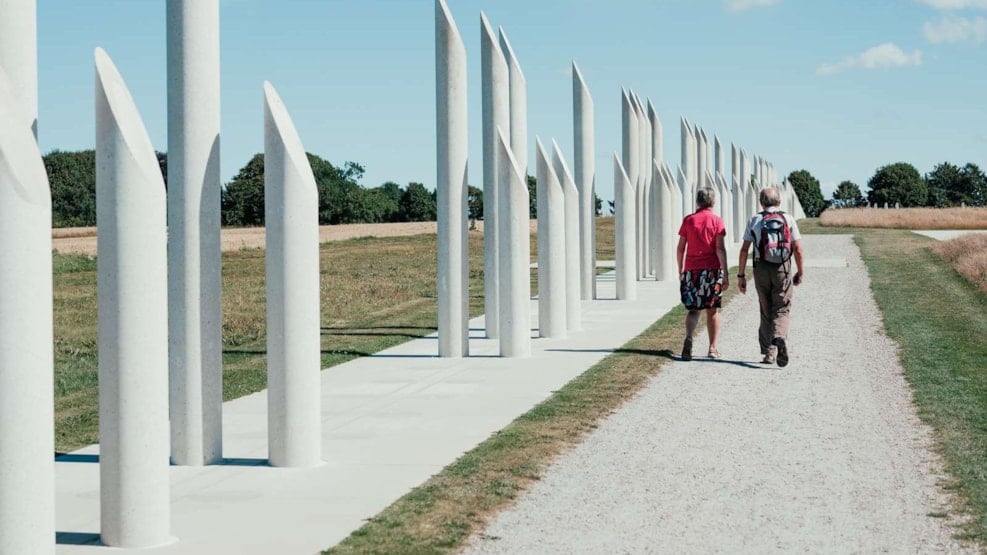
Jelling: From fringe area to superpower in three generations (An outline for life)
The tour, An outline for life, takes you past a show of force of dimensions. One we can hardly fully live into.
Monuments of gigantic character
The monument cost tens of thousands of man-hours, but was only in use for a few years. Harald also had Ravningbroen built, which was then Northern Europe's longest bridge, and built ring castles spread across the country. But the buildings were not allowed to stand for long. The huge palisade around the monument square was burned down before the year 1000. The Raven Bridge was never repaired. And the ring castles were abandoned shortly after the death of Harald Bluetooth in 986/987.
It may seem like a very big waste of blood, sweat and tears. And to find the meaning, we have to look at the major political scene in Europe in the last half of the 900s.
The big neighbor to the south
Just south of the Danish redoubt to the south, Dannevirke, and the trading town of Hedeby, the German Emperor Otto I had power in an empire that stretched from the Danish border to the north and all the way down to the south of Rome. In 962 the Pope proclaimed him Emperor of the Holy Roman Empire The German Nation. After this, Otto is nicknamed the Saviour, as he, with the Pope's blessing, Christianized large parts of Europe that had not yet been converted. Often with the use of force.
Harald's father, Gorm the Old, stubbornly rejected overtures from the continent. But Harald saw the political, military and religious pressure that arose from outside, and in order to stand against the violent forces, Harald introduced major changes in Danish society. They involved both a centralization of power and a voluntary transition to Christianity.
By Christianizing Denmark, Harald removed Otto's excuse for invading the country. At the same time, trade with the continent became easier. And with the church's help, the country was much better organized.
A prestige project of large dimensions
The monument square in Jelling is the place of records. It is the largest building we know from the Viking Age. And contains both the world's largest runestone and the largest shipwreck. Still, the facility has no military significance. It is a prestige project that will show the king's power. Here, Harald framed his achievements in a power symbolism, where mathematics and geometry bear the stamp of Christian thought. Jelling became the place where Harald showed his power.
The short lifespan of Harald's buildings is apparently due to the fact that the political situation in Europe changed significantly during the 980s. The German-Roman Empire lost its breath. At the same time, Harald's son, Sven Tveskæg, strengthened his position of power and set himself up against his father in a showdown that cost Harald his life.
A dominant position in Europe
The weakened threat from the south freed up forces that could be deployed elsewhere. And Sven directed his focus towards the other Nordic countries and not least England. The development removed the military significance of the ring castles, while Harald's symbolic building around the monument square was burnt down. Possibly to erase the memory of Harald.
Harald's grand plans held water as long as he was alive. But the building was destroyed or neglected and was forgotten. However, Harald Blåtand's efforts were so significant that he changed the political picture throughout Europe. Denmark went from being a lawless fringe country to a Christian kingdom and part of the European community. Together with Sven Tveskæg's expansionist zeal and Canute the Great's political skills, the kingdom's power grew to a dominant position in Europe. In just three generations, the Danish kings influenced major political developments for hundreds of years to come.